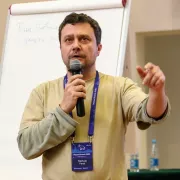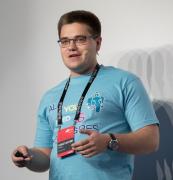PGConf.Online 2021
PGConf.Russia is a leading Russian PostgreSQL international conference, annually taking together more than 700 PostgreSQL professionals from Russia and other countries — core and software developers, DBAs and IT-managers. This will be the first experience PGConf.Online
Thems
- PostgreSQL at the cutting edge of technology: big data, internet of things, blockchain
- New features in PostgreSQL and around: PostgreSQL ecosystem development
- PostgreSQL in business software applications: system architecture, migration issues and operating experience
- Integration of PostgreSQL to 1C, GIS and other software application systems.
Talks
Talks archive
-
 Pavel Stehule
Pavel Stehulepspg is unix pager specially developed for usage in psql Postgres client. Today it allows more than usual browsing data. It can work in application mode or it work as csv or tsv viewer too. I will try to show the main possibilities of this application.
-
 Konstantin Evteev Avito
Konstantin Evteev AvitoIn today's world, operational reporting and real-time analytics are becoming a basic need. There are a huge number of tools, practices, and approaches, which in turn require different expertise and resources. In this talk, I will tell you how to transform your analytics using PostgreSQL. We'll discuss pitfalls when using different schemes. We'll talk about data quality and performance. I expect this talk to be of interest to both beginners and seasoned practitioners with many years of experience (Discussions and questions after the talk will be highly appreciated). The talk outline is as follows. 1. The evolution of reporting - migration from OLTP to OLAP. 2. Data delivery to DWH and related challenges. 3. Scaling architecture in response to growing data volumes. 4. Data quality issues. 5. Maintaining stability with a large number of changes. 6. Different approaches to organizing the work of the DWH team. 7. And, finally, we'll list the challenges we have successfully responded to with various solutions (pgAgent, PGWatch, working with the file system, the new reading of postgresql.conf).
-
 David Steele Crunchy Data
David Steele Crunchy DataBackups are a critical part of any enterprise database solution but they are often done poorly or skipped altogether, which can lead to data loss in the event of hardware failure or some other disaster.
In this talk we'll cover database backup best practices and how to implement them with pgBackRest, including:
- WAL archiving and retention
- Backup frequency and retention
- How to meet recovery time/point objectives
- Configuration options
- Performance considerations
-
 Julien Rouhaud VMware
Julien Rouhaud VMwarePostgreSQL relies on the system collation libraries, such glibc or ICU, for text ordering. One know caveat is that when the library change its sort order for a collation, any index created using the old order is likely to be corrupted when the new version of the library is installed.
In this talk, we'll see the improvements done in PostgreSQL 14 to keep track of the collation versions, detect and fix possible index corruption due to library upgrades and the work currently being done to further improve this area.